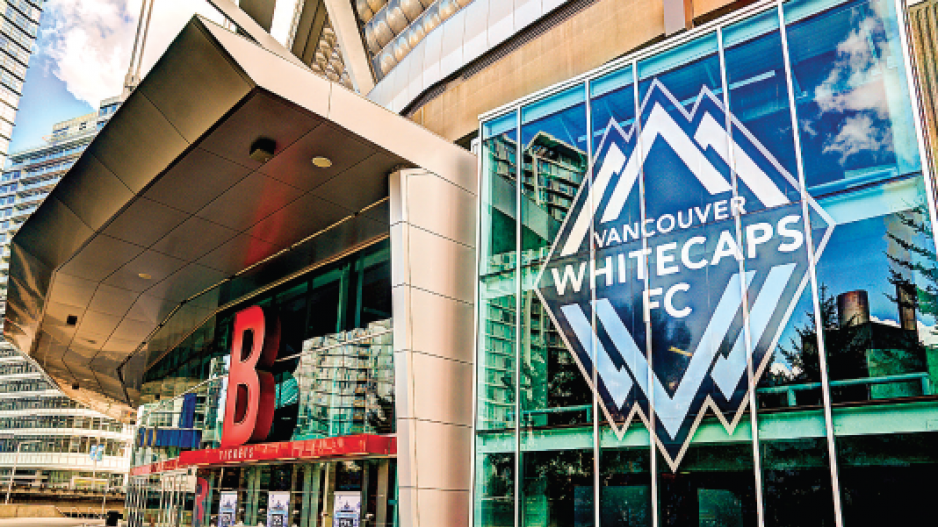The ailing Canadian dollar is in the same currency exchange territory versus its U.S. counterpart as it was when the Vancouver Canucks were preparing to move into their new downtown arena 20 years ago this month.
But it’s still above the US$0.67 of mid-September 2000 when the National Basketball Association Vancouver Grizzlies were on the cusp of their final season here before moving to Memphis. The baby blue bears will be remembered at the November 2 Canucks game, as part of the season-long 20th anniversary of Rogers Arena.
Currency chaos is a topic that Canucks Sports and Entertainment chief operating officer Victor de Bonis didn’t want to address. He forwarded Business in Vancouver’s interview request to the media relations department, which declined comment on his behalf on September 8. That was, coincidentally, the day after the Washington Post published a story about the effects of the currency decline on the National Hockey League. According to the report, around a third of the league’s revenue is from Canada, the 12-year, $5.2 billion Rogers (TSX:RCI.B) media rights deal is worth only US$3.9 billion at the current rate and the US$71.4 million salary cap for this season rose only US$2.4 million, because of the sagging Canadian dollar.
The Post quoted NHL deputy commissioner Bill Daly as saying teams are better prepared to weather the storm by hedging currency.
In an interview last year, de Bonis said every $0.01 drop in the Canadian dollar means a $690,000 hit to the company’s bottom line. The National Hockey League Players’ Association (NHLPA) website says the Canucks’ 2015-16 roster cost is US$65.13 million.
Drew Dorweiler, a Montreal-based franchise valuator with Dartmouth Partners, told BIV that the currency slump will have a significant impact on the value of Canadian professional sports franchises, particularly in Major League Soccer (MLS) and the NHL, which pay players in U.S. dollars and play most of their away games south of the border, where the low Canadian dollar means they’ll have to pay more for transportation, accommodation, meals and per diems.
Dorweiler said it’s “really going to bite, and it goes directly to the bottom line in a material way.”
He added that a third of NHL franchises lose money annually, a third break even and a third make money.
“It could be the difference between profit and loss.”
Further, if Canadian NHL teams deliver less to the league’s profit-sharing pool, there will be less money to transfer to the have-not franchises in non-traditional U.S. markets.
“Either the extraordinary growth we’ve seen in almost all professional sports in the last few years will slow or, possibly in the case of Canadian hockey teams, we may see some declines,” Dorweiler said.
The Canucks’ 2015-16 regular season schedule features three major road trips: November 7 to 18, which includes visits to three U.S. cities; December 13 to 22 in six U.S. cities; and January 15 to 23, another jaunt through six U.S. cities.
The team is introducing airline-style dynamic ticket pricing, based on the popularity of the opposing team and then fluctuating depending on demand, yet guaranteed not to dip below the original face value charged to season ticket holders.
Tickets for the October 10 home opener against the Calgary Flames range from $89.50 to $290.50, and fans will be subject to new airport-style security measures being implemented league-wide.
Documents filed in BC Supreme Court during owner Francesco Aquilini’s divorce proceedings, which were settled out of court in 2013, show the club was to be paid $72.5 million for local and national broadcast rights in fiscal 2013 and $52.7 million in fiscal 2014. In fiscal 2013, it had $18.2 million in sponsorship deals.
Meanwhile, the vastly improved MLS Vancouver Whitecaps could make it easier on its bottom line if, for the first time, the club hosts a home playoff game at BC Place later this fall instead of travelling south of the border.
The low Canadian dollar also affects Simon Fraser University (SFU), whose Clan teams in football, basketball, soccer and other sports compete in the otherwise all-American National Collegiate Athletic Association.
Vice-president of students Tim Rahilly said the annual travel budget for SFU athletics and recreation is $1.6 million, and the currency slump means $90,000 in extra costs this year.
Last year costs rose $80,000 because of the unfavourable exchange rate. •




